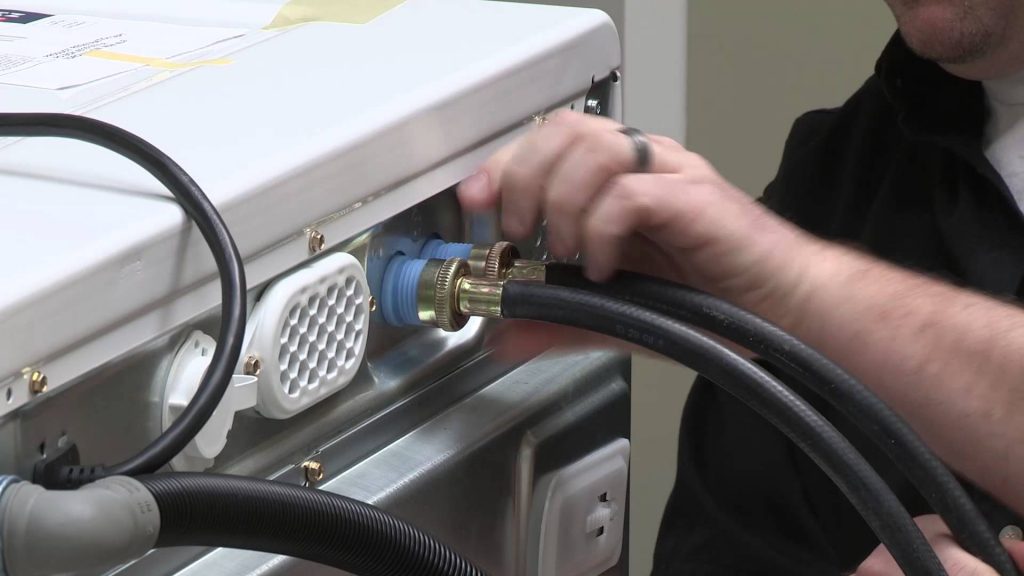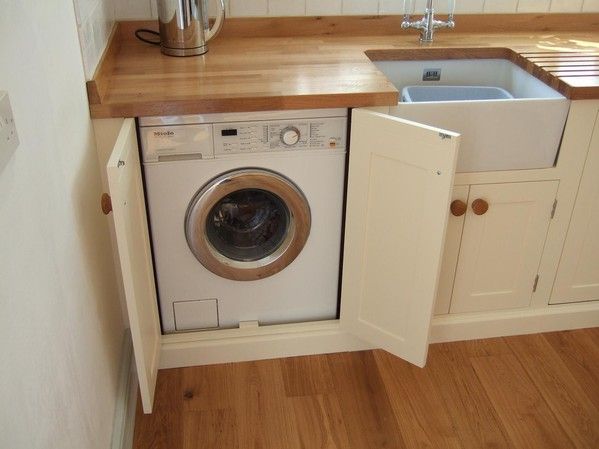Burst washing machine hoses can can cause thousands of dollars in damage to a home. Regular maintenance of a washing machine includes inspecting and immediately replacing bulging or leaking hoses. Make sure to install new hoses when you get a new machine. You can remove rusted old hoses with some elbow grease and a few tricks.
Preparation
Turn off the water to the machine at the hose connections. Start the machine to verify that the water is truly off. Unplug the washing machine and remove the discharge hose from its pipe. The discharge hose usually has a hook-shaped end that fits into the outlet pipe. For top-load machines, tuck the discharge hose under the lid. For front-loaders, let the hose drain into a bucket. Try to unscrew the hose connections by hand. Pull the machine about a foot away from the wall, then check to see that the hoses aren’t kinked. Keep pulling the machine outward until there is enough space to work behind the machine. In tight quarters this usually entails jockeying the washer and dryer to open the space. Place the bucket under the lowest spot in each hose and cut it. Allow the water to drain into the bucket. Repeat with the other hose. Now you can move the washer enough to have working room.

Removal of Trouble-Free Connections
Remove one hose at the faucet connection using either a pipe wrench or slip-joint pliers. Turn the hose connector counterclockwise (left) to loosen. If the connector is coated with rust or other corrosion and will not move, go to the next section. Remove the second faucet connection using the pipe wrench or pliers. Remove the two connections at the back of the machine with the pipe wrench or pliers.
Removing Corroded Connections or connections with Precipitate Coating Douse all rusted connections liberally with a penetrating lubricant, such as WD-40, and allow it to work for thirty minutes or so. Use a pipe wrench or large pliers to slowly and carefully turn the connectors off. Corrosion and precipitation are generally worse on the faucet connections, which are metal-to-metal, than on the washer connection, which is metal-to-plastic. If this doesn’t work, continue. Apply a small amount of weak acid, such as white vinegar or muriatic acid (from pool supply stores) to heavy precipitate (white or green crud instead of rust-red) using an eyedropper or squeeze bottle. Wear rubber gloves and safety glasses when using acid. Allow the acid a few minutes to work, making multiple applications. The hot water line (typically a red handle) will have more precipitates than the cold water line. Use a pipe wrench or pliers to loosen the connectors and remove. If this doesn’t work, continue. Attack the most stubborn connectors with a hacksaw or a rotary saw, such as a Dremel or Rotozip. Cut a diagonal slash back from the outermost edge of the hose’s female connector. This will also cut the treads on the faucet, so don’t get over-confident. Once the lip of the connector is severed, pry back the triangular “flap” with a screwdriver and pliers. Spray in more lubricant and let it work. Use the wrench or pliers to remove. Very heavily corroded connectors may require a second cut. Remove the second connection using these techniques, and remove the two connections at the washing machine.

Install New Hoses
Clean all connectors to remove rust and corrosion. Apply plumber’s grease to the rubber hose gasket and to the threads of the hoses. This should decrease the likelihood of corrosion. Attach the hoses to the faucet connector and to the inlets on the machine. The inlets are marked to identify hot and cold lines. Tighten each connection as much as possible by hand, and then turn once more with the wrench. Remember to turn clockwise (right) to tighten. Turn on the water and check all connections for leaks. Move the washing machine back into place and place the drain hose in its proper receptacle. Take care not to kink any hoses when moving the machine.